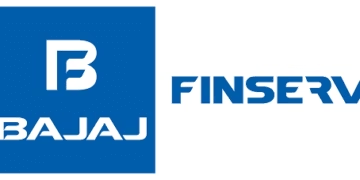- Accelerated commercial growth strategy grounded on strong foundation built over the last decade and leveraging many opportunities ahead
- Focus on margin expansion, consistent cash generation to invest in the business and create long-term value for shareholders
- Capital allocation objectives with disciplined balance sheet management and responsible risk profile
- Air Canada reaffirms full year 2024 guidance and shares expectations for certain financial measures for the full year
- 2025 full year guidance, financial targets for 2028, and long-term aspiration shared
MONTREAL, Dec. 17, 2024 /CNW/ – In conjunction with its 2024 Investor Day being held today at 8:30 a.m. ET., Air Canada today reaffirmed its 2024 full year guidance with certain full-year expectations, announced its 2025 full year guidance, its 2028 key financial targets and 2030 aspirations. The event will be webcast live, and a replay of the investor day along with the presentation materials will be available shortly after the event, at aircanada.com/investors.
 “We are proud and excited to share Air Canada’s ambitions. We are announcing a long-term plan grounded on a proven commercial strategy. The story of Air Canada’s performance is one of demonstrated ability to execute and deliver on commitments. Our strategy, which builds on and leverages the unique strengths developed over the last decade, is to rise even higher with consistent margin expansion and structural cash generation while maintaining a strong balance sheet and a responsible risk profile. Our plan includes expanding the network, improving the customer experience, taking care of our employees, enhancing financial performance and continuously investing in the business to generate long-term value for investors, while being mindful of the interests of our stakeholders. We believe we are very well positioned to execute our long-term plans,” said Michael Rousseau, President and Chief Executive Officer of Air Canada.
“We are proud and excited to share Air Canada’s ambitions. We are announcing a long-term plan grounded on a proven commercial strategy. The story of Air Canada’s performance is one of demonstrated ability to execute and deliver on commitments. Our strategy, which builds on and leverages the unique strengths developed over the last decade, is to rise even higher with consistent margin expansion and structural cash generation while maintaining a strong balance sheet and a responsible risk profile. Our plan includes expanding the network, improving the customer experience, taking care of our employees, enhancing financial performance and continuously investing in the business to generate long-term value for investors, while being mindful of the interests of our stakeholders. We believe we are very well positioned to execute our long-term plans,” said Michael Rousseau, President and Chief Executive Officer of Air Canada.
At the 2024 Investor Day, Mr. Rousseau and members of the executive team will provide details on Air Canada’s strategy, investment thesis and financial targets.
Outlook
Air Canada is reiterating the full year 2024 guidance provided in Air Canada’s news release dated November 1, 2024, and is providing guidance for the full year 2025.
|
Metric |
2023 |
2024 |
2025 |
|
ASM capacity |
99.012 billion |
Approximately 5% |
Between 3% and |
|
Adjusted CASM* |
13.49 ¢ |
Approximately 2% |
Between 14.25 ¢ |
|
Operating expenses |
$19.554 billion |
Not guided |
Not guided |
|
Adjusted EBITDA* |
$3.982 billion |
Approximately $3.5 |
Between $3.4 and |
|
Operating income |
$2.279 billion |
Not guided |
Not guided |
|
Free cash flow* |
$2.756 billion |
Not guided |
Breakeven +/- $200 |
|
Net cash flows from |
$4.320 billion |
Not guided |
Not guided |
Major Assumptions
Air Canada made assumptions in providing its 2024 and 2025 guidance—including moderate Canadian GDP growth for 2024 and 2025. Air Canada also assumes that the Canadian dollar will trade on average, at C$1.36 and C$1.40 for the full year 2024 and 2025, respectively, and that the price of jet fuel will average C$1.00 and C$0.95 per litre for the full year 2024 and 2025, respectively.
In addition, Air Canada shared its expectations for certain financial measures for the full year 2024, its long-term 2028 financial targets and 2030 aspirations which are described below, and which will be discussed during its Investor Day presentations.
|
Metric |
2023 |
2024 |
2028 |
2030 |
|
Operating revenues |
$21.833 billion |
Approximately |
Approximately |
Exceed $30 |
|
Adjusted EBITDA |
18 % |
Approximately |
Greater than or |
Between 18% |
|
Operating margin |
10 % |
Not provided |
Not provided |
Not provided |
|
Net cash flows from |
108 % |
Greater than |
Approximately |
Approximately |
|
Additions to property, |
7 % |
Approximately |
Lower than or |
Lower than |
|
Free cash flow margin* |
13 % |
Between 4% |
Approximately |
Approximately |
|
Return on invested |
18 % |
Not provided |
Not provided |
Greater than or |
|
Fully diluted share |
Approximately |
Not provided |
Lower than 300 |
Lower than 300 |
1Percentage amounts in the table above may not calculate exactly due to rounding.
The 2028 long-term targets and 2030 aspirations provided in this news release do not constitute guidance or outlook, but rather are provided for the purpose of assisting the reader in measuring progress toward Air Canada’s objectives. The reader is cautioned that using this information for other purposes may be inappropriate. Air Canada may review and revise these targets and aspirations including as economic, geopolitical, market and regulatory environments change. These targets and aspirations are used as goals as Air Canada executes on its strategic priorities, and they assume a normal business environment. Air Canada’s ability to achieve these targets and aspirations is also dependent on its success in achieving initiatives and business objectives that are described in the 2024 Investor Day presentations which will be available shortly after the event at aircanada.com/investors, including, but not limited to, those relating to increasing revenues, growing fleet and network capacity, and successfully executing on other key investments and initiatives, as well as other major assumptions, including those described in this news release, and are subject to a number of risks and uncertainties.
Please see the section below entitled “Caution Regarding Forward-Looking Information”.
* Non-GAAP Financial Measures
Adjusted CASM, adjusted EBITDA, adjusted EBITDA margin, free cash flow, net cash flows from operating activities as a percentage of adjusted EBITDA, additions to property, equipment and intangible assets as a percentage of operating revenues, free cash flow margin and return on invested capital are each non-GAAP financial measures or non-GAAP ratios. Such measures are not recognized measures for financial statement presentation under GAAP, do not have standardized meanings, may not be comparable to similar measures presented by other entities and should not be considered a substitute for or superior to GAAP results.
Air Canada uses non-GAAP financial measures and ratios to provide readers with additional information on its financial and operating performance. Non-GAAP financial measures or ratios typically have exclusions or adjustments that include one or more of the following characteristics, such as being highly variable, difficult to project, unusual in nature, significant to the results of a particular period or not indicative of past or future operating results. These items are excluded because Air Canada believes these may distort the analysis of certain business trends and render comparative analysis across periods less meaningful and their exclusion generally allows for a more meaningful analysis of Air Canada’s operating expense performance and may allow for a more meaningful comparison to other airlines.
Net cash flows from operating activities as a percentage of adjusted EBITDA
Air Canada uses net cash flows from operating activities as a percentage of adjusted EBITDA to measure cash conversion from adjusted EBITDA. This measure is defined as the ratio of net cash flows from operating activities to adjusted EBITDA.
Additions to property, equipment and intangible assets as a percentage of operating revenues
Air Canada uses additions to property, equipment and intangible assets as a percentage of operating revenues to measure the proportion of operating revenues that are reinvested as capital expenditures. This measure is defined as the ratio of additions to property, equipment and intangible assets to operating revenues.
Free cash flow margin
Air Canada uses free cash flow margin to measure the amount its free cash flow represents as a percentage of operating revenues. This measure is defined as the ratio of free cash flow to operating revenues.
Return on invested capital
Air Canada uses return on invested capital (ROIC) to assess the efficiency with which it allocates its capital to generate returns. ROIC is calculated as the ratio of adjusted pre-tax income (loss), excluding interest expense, to invested capital. Invested capital includes average year-over-year long-term debt and lease obligations, average year-over-year shareholders’ equity, and the embedded derivative on Air Canada’s convertible notes. In 2020, Air Canada issued convertible unsecured notes. Air Canada has the option to deliver cash or a combination of cash and shares on the conversion date in lieu of shares, giving rise to an embedded derivative that is included as part of the definition of capital. Air Canada calculates invested capital on a book value-based method when calculating ROIC.















































